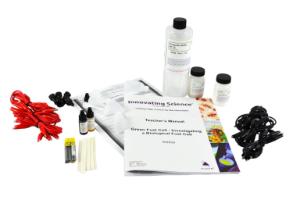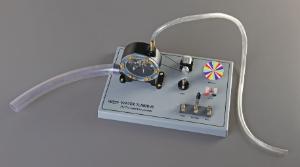9 Facts About Energy Consumption
Middle and High School
Environmental Geology focuses on the interaction between humans and the geologic processes that shape the Earth's environment. Human survival depends on the natural environment, and students in your class will be fascinated by how these concepts are relevant to their own lives. Don't be surprised if they quickly see a connection to current events such as energy consumption, fossil fuels, and green energy.
Here are some facts to fuel their interests
- What is the United States' share of world energy consumption?
In 2021, total U.S. primary energy consumption was about 97 quadrillion Btu. That means our energy use was about 17% of worldwide consumption of about 604 quadrillion BTU. That's a lot of energy considering the United States was only 4.3% of the global population in 2020.1
- How much energy does a person use in a year?
In 2020, the total U.S. primary energy consumption per person was about 282 million British thermal units (Btu), the lowest amount since 1965. 1
- How much U.S. energy consumption & electricity generation comes from renewable sources?
In 2020, renewable energy sources accounted for about 12.6% of total U.S. energy consumption and 19.8% of electricity generation. 1
Primary energy sources include fossil fuels (petroleum, natural gas, and coal), nuclear, and renewable energy. Electricity is a secondary energy source we produce from primary energy sources.
How much energy is used by source in the U.S.?
In 2021, about 61% of this electricity generation was from fossil fuels—coal, natural gas, petroleum, and other gases. About 19% was from nuclear energy, and about 20% was from renewable energy sources.1
Challenge the students in your class to name the various forms of fossil and renewable fuels shown on the right.
- How did the COVID-19 pandemic impact fuel consumption in the U.S.?
The Energy Information Administration reported that in 2020, total U.S. energy consumption decreased 7.3% from 2019 peak levels. That’s no surprise with lockdowns, layoffs, work from home, and the unprecedented decline in travel by air and automobiles. In fact, traffic levels were down 41% and air travel down 96% at the height of the first wave of the pandemic.2
Students can use critical thinking skills to consider how emissions data for six economic sectors across 69 countries indicated a 17% decline in daily global CO2 emissions by April 2020 relative to 2019.3
- How many gallons of gasoline and diesel fuel are made from one oil barrel?
Petroleum refineries in the U.S. produce about 19 to 20 gallons of motor gasoline and 11 to 12 gallons of specialized oil, mainly used for diesel fuel and heating oil, from one 42-gallon barrel of crude oil. Many other petroleum products are also refined from crude oil. The transportation sector accounts for the largest share of U.S. petroleum consumption.
Your students may be interested in knowing the following facts about energy use in their homes:
- What is vampire electricity?
Most of the energy used by home electronics is while they are turned off but still plugged in. However, electronics still draw a little power even when turned off. Also known as "standby," electricity because it’s associated with electronics in standby or idle mode (aka "phantom" or "vampire" electricity). Ask students whether they keep their cell phone (or other devices) chargers plugged in — whether or not a device is charging!
- Do ENERGY STAR appliances really use less electricity?
Absolutely! On average, home appliances (e.g., washers, dryers, dishwashers, refrigerators) account for 20% of a household’s electric bill. However, U.S. Department of Energy certified ENERGY STAR appliances can reduce that share. These highly efficient appliances use 10 to 50 percent less energy yearly than a non-energy efficient equivalent. Psst, some Energy Star products may be eligible for tax credits.
- What are some of the top innovations that reduce household energy consumption? Whether you’re concerned about the environment or just trying to save money on energy bills (or both), you won’t be disappointed with the availability of energy-efficient household technology. Companies are innovating quickly to address these concerns and bring new energy-saving technology to market. Here are just a few:
- LED lights
- Smart thermostats
- Energy-efficient insulation
- Cool roofs (using material that reflects heat)
- High-efficiency heat pumps (work by transferring heat instead of generating it or using a compressor to cool air)Internet-connected appliances (make it easy to optimize functions based on weather, preferences, time of the day, etc.)
Challenge students to think of other innovative products that may reduce household energy use
Including these science facts in your geology lesson plans will surely energize your class. You may find there are many renewable energy fans in your classroom!
1. U.S. Energy Information Administration2. U.S. Government Accountability Office
3. Liu et al. (2020) COVID-19 causes record decline in global CO2 emissions.
Recommended Products
[StartProductBlock]

Green Fuel Cell: Energy From Yeast
This fun activity is a great tool for discussing alternative energy sources.
[EndProductBlock]
[StartProductBlock]

Essential Physics Demo: Hydroelectric Demonstration
Introduces students to the wave of renewable energy. Also provides an illustration of how an electrical circuit is affected by its resistance.
[EndProductBlock]
[StartProductBlock]

Ward's® Wind Kit
STEM-based project kit help students build a wind-powered lift or a more advanced turbine.
[EndProductBlock]
